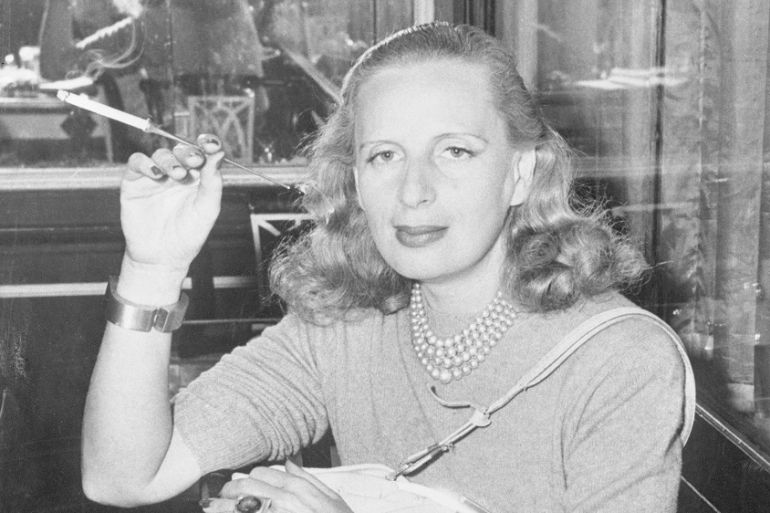Tamara de Lempicka: Why Google honours her today
Described as a The Baroness with a Brush, the artist is hailed for her distinctive Art Deco style.

Described as a The Baroness with a Brush, Tamara Lempicka is hailed for her distinctive Art Deco style.
Lempicka would be celebrating her birthday on May 16. In her honour, Google is changing its logo in 14 countries.
This is her story:
Russian Revolution
-
Born Maria Gorska in Warsaw, Poland, in 1898, Lempicka’s love for art started at an early stage.
- Her father was a Russian lawyer, her mother a Polish socialite. She went to boarding school in Lausanne, Switzerland.
-
As a young child, in 1911, she spent a summer in Italy with her grandmother, who inspired her love for great Italian Renaissance painters, which would define the rest of her life.
- Upon her parents’ divorce in 1916, she was sent to live with her aunt in Russia, where she met her future husband, prominent lawyer Tadeusz Lempicki, and married him in 1917 when she was 19.
-
The same year, the Russian Revolution started. Her husband was arrested in the middle of the night by the Bolsheviks.
- After releasing him from prison, Lempicka and her husband fled. They found refuge in Paris.
A refugee
-
The artist arrived in Paris at the height of post-cubism. In Paris, she reinvented herself as “Tamara de Lempicka” a name that had direct aristocratic pretensions.
-
The artist was a refugee in the city, her daughter Kizette was born in Paris, adding to their financial burden, and making Tamara determined to make money from her art.
-
She began her formal art training under French painters Maurice Denis and Andre Lhote.
-
Lhote was her most influential mentor as his style – often referred to as “soft cubism” – is detectable in Lempicka’s style.
-
She became prominent in Paris’ bohemian art scene, her paintings merging late cubist and neoclassical techniques to create a metal-like visual style that was her own.
-
“My goal is never to copy,” Lempicka reportedly said. Instead, she sought to “create a new style, clear luminous colours”.
My goal is never to copy
Early success
-
By the mid-1920s, Lempicka’s portraits were being exhibited in Paris salons.
-
In 1927 Lempicka painted one of her best-known works: Autoportrait (Lempicka in a green Bugatti), for the cover of German fashion magazine Die Dame.
- The portrait celebrates the independence of women and is one of the best-known examples of Art Deco portrait painting.
-
In the same year, she received her first prize at the Exposition Internationale des Beaux-Arts for the painting Kizette on the Balcony, a portrait of her daughter.
- In 1928 she divorced her husband; in 1933 she married Raoul Kuffner, a baron of the former Austro-Hungarian Empire and art collector.
-
She placed a high value on working, famously saying: “There are no miracles, there is only what you make.”
Love this! Tamara in a Green Bugatti by Tamara de Lempicka #tamaradelempicka #lempicka #art #artdeco pic.twitter.com/UAdqk5uZZU
— iretweetart (@IRetweetArt) March 13, 2017
Escaping war
- In Paris, Lempicka recognised the early signs of a second world war. She and her husband, Baron Kuffner, decided to leave France and move to Hollywood, California.
- From the US, she managed to rescue her daughter Kizette from Nazi-occupied Paris in 1941 after a struggle.
-
In 1943 she moved to New York City. By then her style had become somewhat passe, and as a result, her work wasn’t in as much demand as it had been before.
- When her husband died in 1961, she moved to Houston and began producing more abstract paintings. However, her work was poorly received.
-
Following the baron’s death, the artist sold many of her possessions and made three around-the-world trips by ship.
-
By then, she was repainting her early works; the last work she did was the fourth copy of her painting of St Anthony.
- The artist was reportedly very temperamental in her old age. In 1978, she decided to move to Mexico, where two years later she died in her sleep. In accordance with her wishes, her ashes were scattered on top of Popocatepetl, a volcano in Mexico.